A guest post by Music Photographer Rick Bennett.
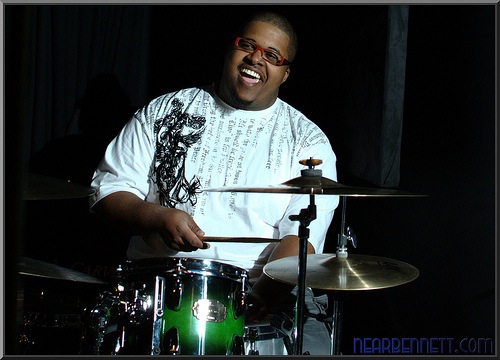
Bars are challenging shooting environments now matter how you slice it–crappy lighting, drunk crowds, cramped spaces. Add in musicians who like to move around a lot, speakers in photographically inconvenient locations, and microphone stands that tend to bisect heads, and you’ve got an ideal situation for a photographer who likes a challenge. In Part 1, I covered the basics of equipment needed to shoot bands in bars: low-noise-at-high-iso cameras, off-camera flash, and mongo glass. In Part 2 I talked about where I’ve found success with placing my flashes, and the camera settings that have yielded the best results. Finally, in this part, I get to the shooting.
Before you start shooting, take care of your ears so that you can do this more than a couple of times–buy some ear plugs at your local hardware store (near the goggles and other protective gear) or pharmacy (near the sleep aids). I find I spend a significant amount of time standing right in front of the speakers, and my ears are ringing pretty badly by the end of a performance if I don’t use ear plugs. Even with the plugs in, you’ll be able to hear every part of the performance.
While shooting, you must be polite. Most people are accommodating if you step in front of them for a moment to make a shot, but do that too frequently or for too long, and you’ll start to irritate the fans of the band. Remember that the band is there to perform for their fans. The pictures you make are secondary to that purpose. I’ve only been in one situation where I felt like my presence as a photographer was not appreciated by one fan–I finished the shot and stepped off the dance floor. The huge majority of the time, people are very forgiving of me moving in and out of the crowd in order to get the shot I want. But I’m very careful to not obstruct any one person’s view for more than a few seconds–no more than any other fan would obstruct their view.
The easiest way to stay out of the fans’ view is to crouch down for the low angle. Most big bands perform on a stage that is raised several feet above the heads of the crowd so that everyone can see. Bands who play in bars don’t generally have this advantage, but you can create that look by taking pictures from low angles. The shots look cool, and the fans will appreciate not having to look around your f/2.8 lens to see their favorite guitar solo.
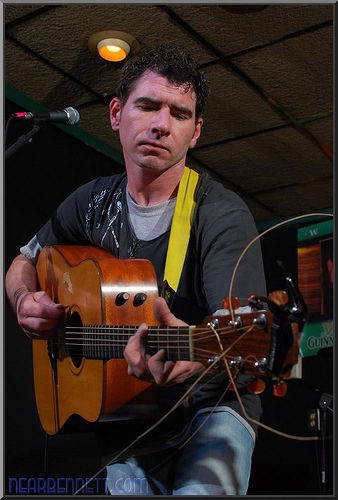
I find the most challenging aspect of shooting musicians is composing shots without microphone shadows or severe instrument shadows. This isn’t a problem for guitars, but any instrument that is close to the face can be problematic, e.g. saxophone, trumpet, violin/fiddle. The shadows are easy to see if you’re shooting with ambient stage lighting and no flash. But with remote flash, it means you have to be on the same side of the instrument or microphone as your flash is. In this lighting diagram, if the left flash fires, the microphone will cast a nasty shadow across the singer’s face. If the right hand flash fires, no shadow problem. So you have to stay close to the flash, but not so close that it looks like on-camera flash.
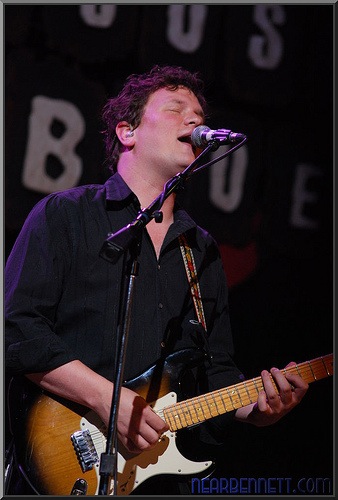
The other major compositional challenge is getting pictures framed so that microphones and stands don’t detract from, or steal attention in, the photo. Microphones and stands are part of a performance, but I don’t like them to dominate a picture. For example, if I’m framing two musicians in the shot and the microphone from one musician is covering the face of the other, I won’t take the shot (or I’ll delete it later). I’ll change my position, or wait until the musicians change theirs if I can.
I also don’t particularly care for shots from dead-center on a signer. It will look like they’re eating their microphone, or worse, have it shoved up their nose. That’s why I tend to take pictures from the side–I get great shots when the singer pulls back from the microphone a little bit so that you can see their whole face.
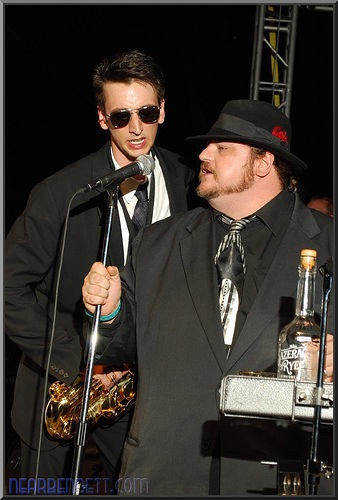
If I’m shooting the gig for the band, or in the hopes that the band will hire me in the future, I’ll work through the following shot list during their performance:
- a couple of shots of every member of the band. If some play and sing, I’ll capture them doing both.
- detail shots, generally closeups of instruments during a set break. Not all of them, just those that strike me as interesting photographically.
- detail shots of instruments being played. Again, not all of them, but whatever strikes me as interesting at the time. I love shots of accordions!
- motion blur of fingers on instruments, usually a guitar or bass. No flash here, just a 1/15 to 1/60s shutter, and up close with a f/1.8 lens. The challenge here is to capture a moment where the instrument isn’t moving very much, but the fingers are.
- any time the band interacts with the fans or fans enjoying the show, e.g. clapping, dancing, rock hands, etc, with band and fans in the frame
- a group shot where a) all the band members are visible in the frame, and b) everyone is playing, and c) a little bit of audience
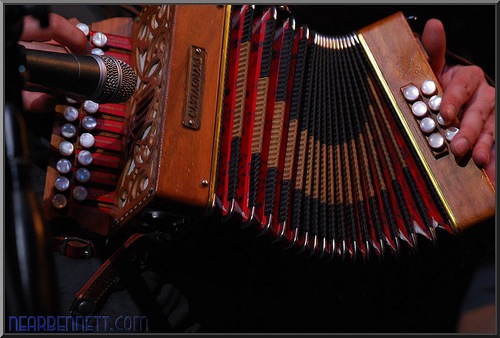
Finally, be sure to give the drummer some lovin’. Drummers are usually in the back, with no stage lighting whatsoever, and as such, they rarely have pictures taken of them. I’ll even change the angle and power of remote flashes if I need to in order to capture a drummer. I make it my mission to capture at least one killer image of the drummer before I go home for the evening. If the drummer has any ambient lighting hitting them at all, a slow shutter will create some great motion blur.
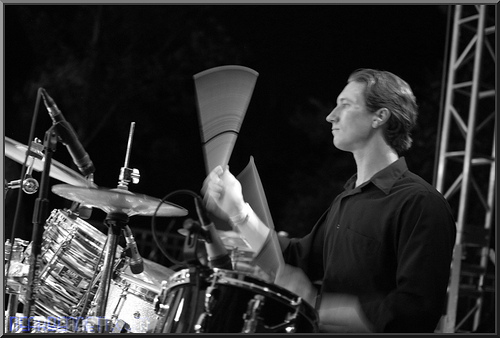
When taking all of these pictures, I’m looking for “music faces”–points where the musicians are clearly enjoying themselves, and “music moments” where two (or more) musicians are jamming together. These are the images I really like to see. When I look at my images in post processing, I can tell who captured my attention photographically because I’ve got a lot more images of them. And I’ve walked away from shooting some gigs (not paid, or pre-arranged by the band) because the musicians weren’t performing–they just stood there playing their instruments. Meh, that’s no fun. I could have taken five shots and have faithfully captured their performance.
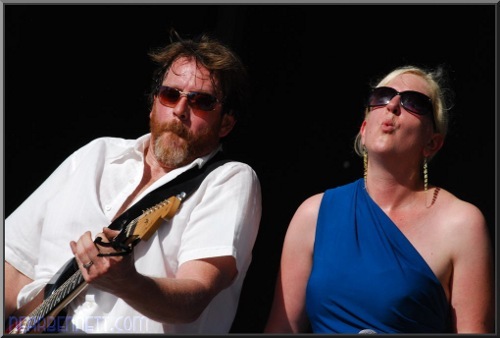
Make sure the band knows how to get in touch with you by the end of the performance. They’ll definitely have noticed you (especially if you have that 70-200 f/2.8 lens) and are probably interested in seeing your work.
What you do with the images and how you processes them will depend on your purpose in taking them. If you wanted to get the band’s attention and hopefully have them hire you, then pick a handful of the best and get them on-line in a hurry. That will help solidify in their memory that you were the one taking pictures, and, holy cow, you took some great ones! If the band had already hired you, then I assume you’ve already worked out a method of payment and delivery.
As you’re going through the images from the night, don’t sweat the deletes. I typically keep only 1/4 to 1/3 of the images from a night of shooting. And the band doesn’t see those out-of-focus poorly framed shots.
Don’t wait for the band to contact you–reach out to them through whatever means possible: Facebook, Twitter, their website. Let them know where to see your work and how to contact you for more.
Good luck! And share your work in the forums.
Rick Bennett has been shooting bands in bars, at festivals, and on big stages for about a year. You can see more of his work on his blog, portfolio, or Flickr stream.
Post from: Digital Photography School – Photography Tips.
How to Photograph Bands in Bars, Part 3 – Shooting
